How to propagate strawberries from runners, cuttings, and even fruit slices
Fancy making new strawberry plants for free? Here's what you need to do...
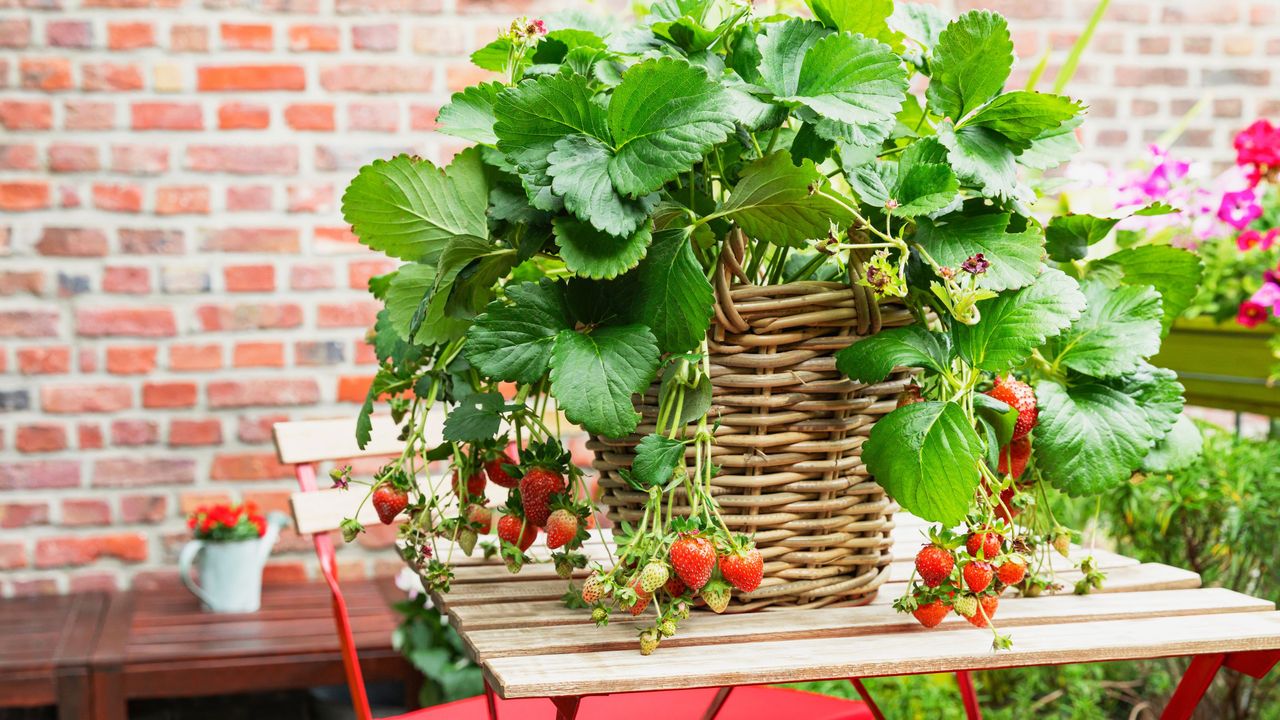

Is there anything more wholesome than learning how to propagate strawberries?
One of the most fruitful (literally!) garden ideas around, this timeless activity has sneaked its way onto our list of garden trends – largely because everyone on social media, suddenly obsessed with all things farmcore, can't stop talking about it.
With so many influencers sharing their tried-and-tested methods for making new strawberry plants, you might be wondering which propagation tips actually work. Don't worry, though, because we're here to help.
How to propagate strawberries
When it comes to learning how to propagate strawberries, there are basically three methods available to you – although one is, admittedly, a little more temperamental than the others.
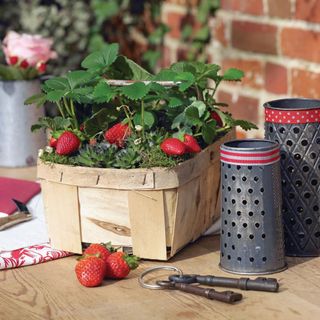
With that caveat in place, then, it's time to learn how to propagate strawberries.
1. How to propagate strawberries from runners
When it comes to learning how to propagate strawberries, you'd be hard pressed to find an easier method than using runners.
'You will start to notice runners coming off your plant after it's finished fruiting,' says Joseph Clark of @JoesGarden fame.
Get the Ideal Home Newsletter
Sign up to our newsletter for style and decor inspiration, house makeovers, project advice and more.
'They almost look like very thin vines with a few small leaves dotted along. And, more importantly, they can be used to make entirely new strawberry plants!'

As a child, Joe spent a lot of time with his great grandmother in the garden, learning about the different plants, growing fruit and veg and spotting all the animals in the garden. Nowadays, Joe utilises his abundance of innovative growing ideas to create easy and fun recipes to help his audience lead more healthy and environmentally-friendly lives (whilst also saving money). He recently launched a gardening subscription box service called ‘Garden with Joe’.
Without any intervention from you, these plantlets will put down roots as they touch the soil, allowing the strawberry plant to regenerate itself.
To make new strawberry plants, though, 'all you need to to is poke the bottom of the leaves into the soil, and wait a few weeks,' says Joseph.
'These leaves are essentially baby strawberry plants and will develop their own roots. And, once this has happened, you can remove them from the main runner, and voila! Just like that, you have new strawberry plants.'

Using this method, you can easily expect 10 or more from one plant.
However, if you decide that you don't wish to propagate any new strawberries, Joseph says it is best to remove these runners as they remove a lot of energy from the plant.
2. How to grow a new strawberry plant from a strawberry
It is possible to grow a new strawberry plant from a strawberry, although it's not quite as easy as the TikTok videos make it out to be.
To do this, you will need:
- Ripe and healthy strawberry fruit
- Small pot or container (you can buy a multi-pack of 10 flower pots from Homebase)
- Potting soil, like Espoma Organic Potting Mix
- Spray bottle filled with water (like this stylish powder-blue plant mister)
- Plastic wrap or a clear plastic bag
'Learning how to propagate strawberries from a single slice of fruit is quite a fun and interesting experiment, but its success rates might be lower compared to using seeds,' says Morris Hankinson, the director of Hopes Grove Nurseries.

Morris Hankinson is the founder and managing director of Hopes Grove Nurseries Ltd, the UK’s only specialist grower-retailer of hedging plants., which he established after graduating with a Commercial Horticulture Degree from Writtle College, Essex in 1992 The business grows hedging plants across three nursery sites in the beautiful Weald of Kent totalling 130 acres, employing 20 full-time local staff, and serving over 17000 customers each year.
To get started, you should 'select a ripe and healthy strawberry from which you want to propagate new plants,' says Morris. Make sure that it shows no signs of mould, disease, or damage.
Next, cut the strawberry into thin slices using a clean and sharp knife. 'Each slice should ideally contain a few seeds,' he adds, noting that you will then need to evenly space your strawberry slices on the surface of a small pot or container filled with potting soil.
'Make sure the pot has drainage holes at the bottom to prevent waterlogging,' he adds, 'and press your strawberry slices slightly into the soil, taking care not to go too deep.'
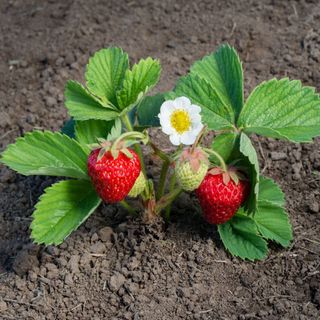
Once your strawberry slices are settled into their new home, Morris advises using a spray bottle filled with water to mist them gently. The aim is to keep the soil consistently moist, but avoid overwatering, as this can cause rot.
'To create a mini greenhouse effect and retain moisture, cover the pot with clear plastic wrap / clear plastic bag,' says Morris. 'This helps create a humid environment for the seeds to germinate.'
Avoid placing the pot in direct sunlight, as it may cause the slices to dry out, and instead opt for a location that receives bright, indirect light. And then? Well, patience is a virtue.
'Check the slices regularly to ensure the soil remains moist,' says Morris. 'Within a few weeks, you might start to see tiny sprouts emerging from the seeds. And, once the new seedlings have grown a few sets of true leaves and are sturdy enough, you can carefully transfer them into individual pots or directly into your garden if the weather is suitable.'
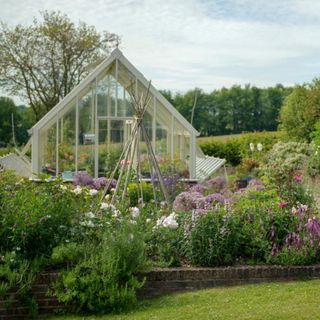
Don't be disheartened if it doesn't work; not all strawberry seeds in the slices may germinate. So, if you want a more reliable method of propagating strawberries, consider growing strawberries from seeds.
3. How to grow strawberry plants from seed
If you fancy a challenge, you can learn how to propagate strawberries by collecting seeds from your fruit plants.
All you have to do is take one strawberry, and, using a toothpick, scrape at the seeds to dislodge them and remove them from the fruit. Once this is done, clean them and dry them, before scattering the seeds thinly and evenly over the surface of small pots or trays filled with fine seed compost.
Once this is done, lightly cover your pots with sharp sand, place a clear plastic bag or sheet of glass over the pot or tray to maintain humidity and shade, and wait for them to germinate.
Fair warning, though: this is 'not a recommended method for growing strawberries as it’s time-consuming and it’s not very likely that the seeds will germinate,' says Chris Bonnett, founder of Gardening Express.
'You’ll be saving yourself time and energy by buying strawberry plants from a garden centre and your chances of getting a bountiful harvest will be much higher,' he adds.
Runners it is, then! If you'll excuse us, we're just nipping out to see if we can spot any plantlets coming off our strawberry plants...
Can you grow a new strawberry plant from a strawberry?
'It's not possible to regrow strawberries by planting one in the soil, as instead of sprouting roots and growing, it will start rotting,' says Chris. However, some people have found success by placing strawberry slices on the soil surface and misting them until they germinate.
Can strawberries be grown from cuttings?
If you are trying to learn how to propagate strawberries, it is best to take a non-traditional route when it comes to taking cuttings. Instead, the easiest thing to do is look for strawberry runners on your plant. By pinning them to the soil, or onto a pot with compost in it, you can harvest your runners as new plants.
'I dig up and compost the parent plant after four years as their productivity rapidly declines after this and they often accumulate viruses,' writes Monty Don in his popular gardening blog.
'By the end of August the rooted plantlets are ready for planting out into a new bed that has had a generous amount of compost added to it as strawberries are greedy feeders,' he adds, pointing out that 'they should always be planted on soil that has not grown strawberries for at least three years to avoid possible viruses.'

Kayleigh Dray became Ideal Home’s Acting Content Editor in the spring of 2023, and is very excited to get to work. She joins the team after a decade-long career working as a journalist and editor across a number of leading lifestyle brands, both in-house and as a freelancer.
-
 What’s the difference between conservatories and orangeries?
What’s the difference between conservatories and orangeries?Experts break down the key variations you should know
By Sarah Warwick
-
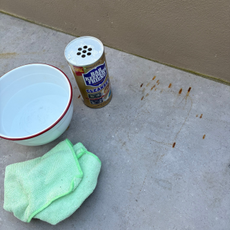 I’ve found the best solution for cleaning stains from a patio - and it’s only £8 on Amazon
I’ve found the best solution for cleaning stains from a patio - and it’s only £8 on AmazonThe stains practically vanish!
By Kezia Reynolds
-
 How do you keep a wet room dry? 7 tips for a slip-proof shower room
How do you keep a wet room dry? 7 tips for a slip-proof shower roomWet rooms have suffered bad press in the past, thanks to poor design – our top tips will help keep your space fresh and dry
By Natasha Brinsmead